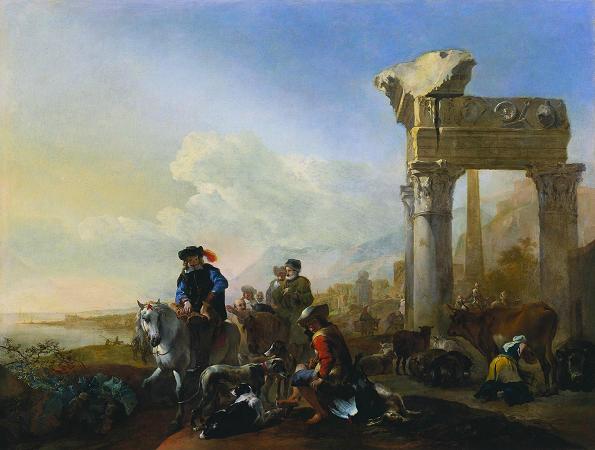Abraham Bloemaert (1566 - 1651). Abraham Bloemaert was a Dutch painter and printmaker in etching and engraving. He was one of the Haarlem Mannerists from about 1585, but in the new century altered his style to fit new Baroque trends. He mostly painted history subjects and some landscapes. He was an important teacher, who trained most of the Utrecht Caravaggisti, at least for a period. Bloemaert was born in Gorinchem, Habsburg Netherlands, the son of the architect Cornelis Bloemaert I, who moved his family to Utrecht in 1575, where Abraham was first a pupil of Gerrit Splinter and of Joos de Beer. From the age of 15 or 16, he then spent three years in Paris from 1581-1583, studying six weeks under a Jehan Bassot and then under a Maistre Herry. While in the School of Fontainebleau he received further training from his fellow countryman Hieronymus Francken. He returned to Utrecht in 1583, just before the French Wars of Religion began, which destroyed much of the work at the Chateau of Fontainebleau. When his father was appointed city architect in Amsterdam 1591 he accompanied him there, and on his father's death in 1593 returned finally to Utrecht, where he set up a workshop and in 1594 became dean of the zadelaarsgilde, as from 1367 the painters were included in the saddlemaker's guild, with no Guild of St. Luke of their own. In 1611, along with the two other leading Utrecht painters, Joachim Wtewael and Paulus Moreelse, he was one of the founders of the Utrecht Guild of Saint Luke a new Utrecht painters' guild, and became its deken in 1618. Many of Bloemaert's paintings were commissioned by Utrecht's clandestine Catholic churches. He died in Utrecht. Accorgint to the Encyclopedia Britannica Eleventh Edition, e excelled more as a colourist than as a draughtsman, was extremely productive, and painted and etched historical and allegorical pictures, landscapes, still-life, animal pictures and flower pieces. In the first decade of the seventeenth-century, Bloemaert began formulating his landscape paintings to include picturesque ruined cottages and other pastoral elements. In these works, the religious or mythological figures play a subordinate role. Country life was to remain Bloemaert's favourite subject, which he depicted with increasing naturalism. He drew motifs such as peasant cottages, dovecotes and trees from life and then on his return to the studio worked them up into complex imaginary scenes.
more...














